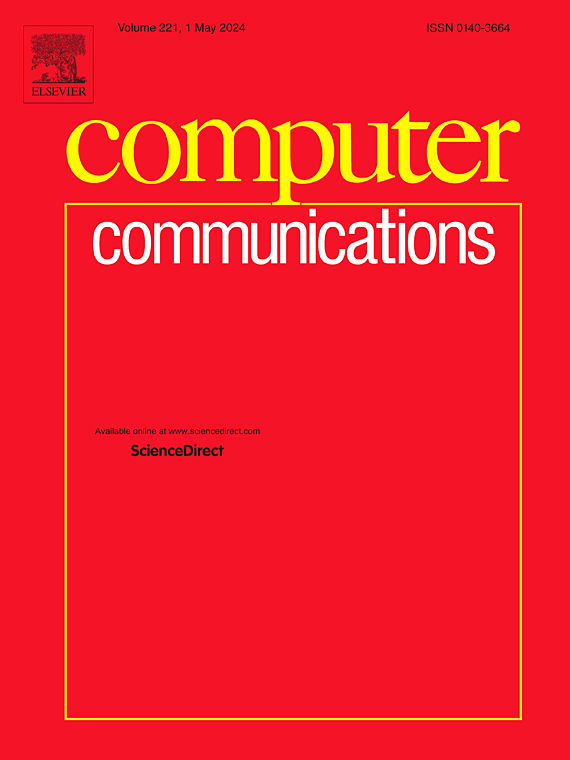Community-Oriented Edge Computing Platform
IF 4.5
3区 计算机科学
Q1 COMPUTER SCIENCE, INFORMATION SYSTEMS
引用次数: 0
Abstract
Democratizing the edge by capitalizing the underutilized computational resources of end devices, referred to as Extreme Edge Devices (EEDs), can foster various IoT applications. In this paper, we propose the Community Edge Platform (CEP). CEP is the first platform that exploits business, institutional, and social relationships to build communities of requesters and EEDs to eliminate recruitment costs and preserve privacy in EED-enabled environments. CEP promotes service-for-service exchange and utilizes a hierarchical control paradigm to prioritize the enrollment of nearby devices as workers. CEP also considers the fact that community-imposed constraints can lead to unbalanced work distribution. To alleviate this issue, we propose the Community-Oriented Resource Allocation (CORA) scheme. CORA accounts for community restrictions and strives to minimize the execution time and makespan while retaining a reasonable scheduler runtime. Towards that end, we formulate the resource allocation problem as a Bipartite Graph Matching problem. Comprehensive qualitative evaluations demonstrate the superiority of CEP compared to 12 prominent edge computing platforms in terms of various system architecture and performance features. Additionally, extensive simulations show that CORA outperforms six prominent resource allocation schemes by up to 44% and 7% in terms of makespan and execution time, respectively, while achieving a much faster runtime, outperforming the best of the six baseline resource allocation schemes by a factor of six.
面向社区的边缘计算平台
通过利用终端设备(称为极限边缘设备(eed))未充分利用的计算资源来实现边缘的民主化,可以促进各种物联网应用。本文提出了社区边缘平台(CEP)。CEP是第一个利用商业、机构和社会关系来建立请求者和需求社区的平台,以消除招聘成本,并在支持需求的环境中保护隐私。CEP促进服务对服务的交换,并利用分层控制范式优先考虑附近设备作为工作人员的注册。CEP还考虑到这样一个事实,即社区强加的约束可能导致工作分配不平衡。为了解决这个问题,我们提出了以社区为导向的资源分配方案。CORA考虑了社区限制,并努力在保留合理的调度器运行时的同时最小化执行时间和完工时间。为此,我们将资源分配问题表述为二部图匹配问题。综合定性评估表明,与12个突出的边缘计算平台相比,CEP在各种系统架构和性能特征方面具有优势。此外,广泛的模拟表明,CORA在完工时间和执行时间方面分别比六个突出的资源分配方案高出44%和7%,同时实现了更快的运行时,性能比六个基准资源分配方案中的最佳方案高出六倍。
本文章由计算机程序翻译,如有差异,请以英文原文为准。
求助全文
约1分钟内获得全文
求助全文
来源期刊

Computer Communications
工程技术-电信学
CiteScore
14.10
自引率
5.00%
发文量
397
审稿时长
66 days
期刊介绍:
Computer and Communications networks are key infrastructures of the information society with high socio-economic value as they contribute to the correct operations of many critical services (from healthcare to finance and transportation). Internet is the core of today''s computer-communication infrastructures. This has transformed the Internet, from a robust network for data transfer between computers, to a global, content-rich, communication and information system where contents are increasingly generated by the users, and distributed according to human social relations. Next-generation network technologies, architectures and protocols are therefore required to overcome the limitations of the legacy Internet and add new capabilities and services. The future Internet should be ubiquitous, secure, resilient, and closer to human communication paradigms.
Computer Communications is a peer-reviewed international journal that publishes high-quality scientific articles (both theory and practice) and survey papers covering all aspects of future computer communication networks (on all layers, except the physical layer), with a special attention to the evolution of the Internet architecture, protocols, services, and applications.
 求助内容:
求助内容: 应助结果提醒方式:
应助结果提醒方式:


